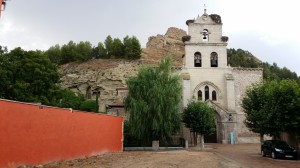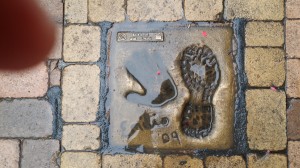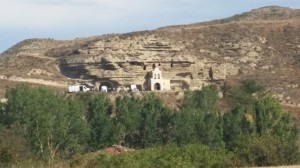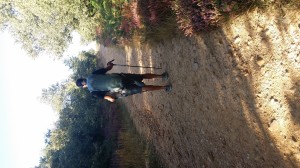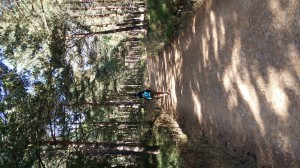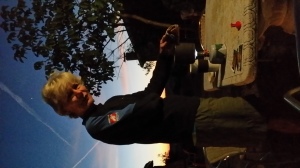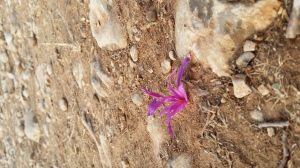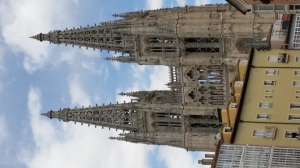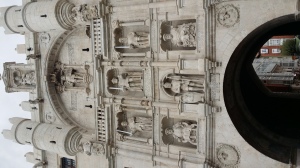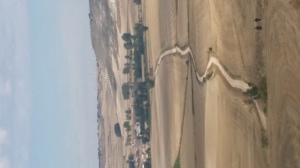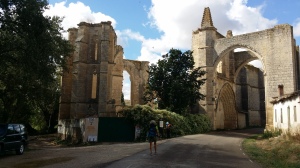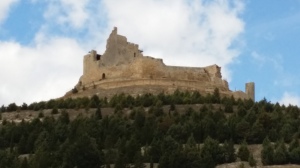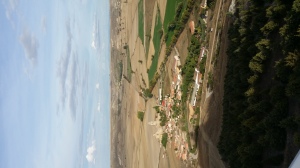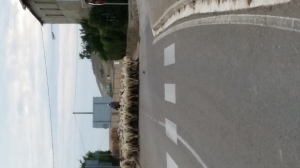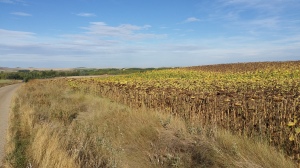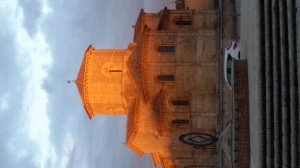First, the numbers: we have now hiked for 12 days and completed 175 miles. We are roughly 1/3 of the way. For perspective, we’ve hiked about from our home in Danville to Lake Tahoe.
When preparing for a long trek, one of the things you are always taught is to try everything out beforehand. Mostly, we did that. When it came to rain gear, Bill had a high tech solution but Diane choose the low tech $5 poncho solution. Clearly, Bill had the better choice, right?
It started to rain. Diane pulled on her $5 poncho. Bill reached for his high tech, ultra light weight pack cover and realized he hadn’t a clue how to put it on! No worries, necessity is the mother of invention! In a few short minutes, Bill’s high tech backpack was covered with a high tech, ultra low weight cover. But, Bill wasn’t …
Bill then realized that his high tech breathable wind breaker and ultra light weight rain pants were underneath this ultra light weight, high tech cover. Hmm! This is a pain!
So he did what every stubborn, high tech buying guy on the planet would do, he pretended that the rain was going to stop any moment, so there’s no NEED to get that high tech gear (which is buried), out! It rained for nearly an hour, straight. Maybe I’ll work on my rain gear a bit this afternoon in the room …
First note: the Casa Rural, La Aldea Encantada, was wonderful. Ana and get family are great hosts and make this place more than worth the 1 km. hike off the Camino.
The first town we hit was Belorado. A lot of interesting history, with another church built into the hillside. If you look at the picture below, you may be able to make out the windows in the hillside to the left of the church.
Now, while walking through the streets of Belorado, Diane spotted some very interesting plaques in the street. We noted that each plaque has the hand and shoe print of a famous person. Note this plaque, below. The date, ’09, and the hand written name “Emilio” should provide a clue. While not very readable, the small sign in the upper left says:”Emilio Estevez”. It seems he made this plaque in ’09 when he made the movie, “The Way”.
Finally, we passed another church built into the hillside. This time, that German film crew was up there continuing with their movie. We again turned down a cameo role.
